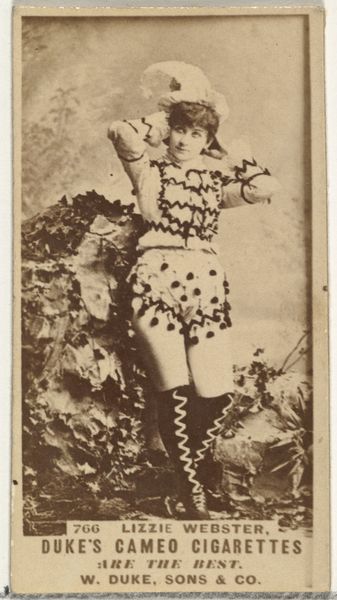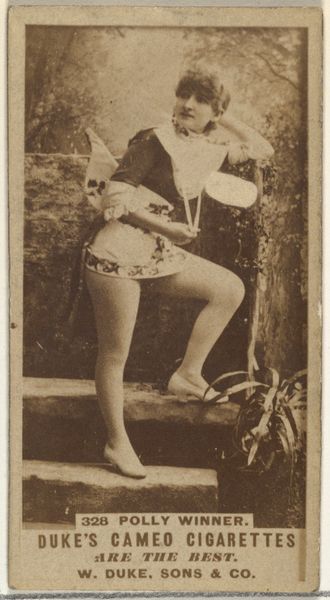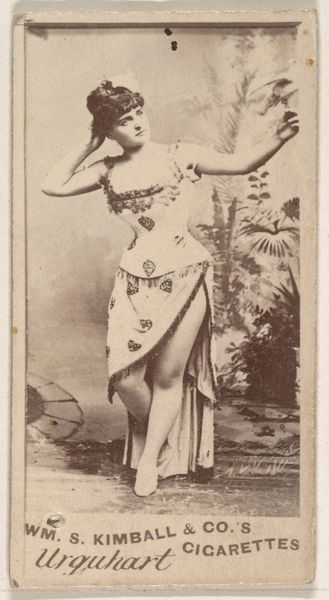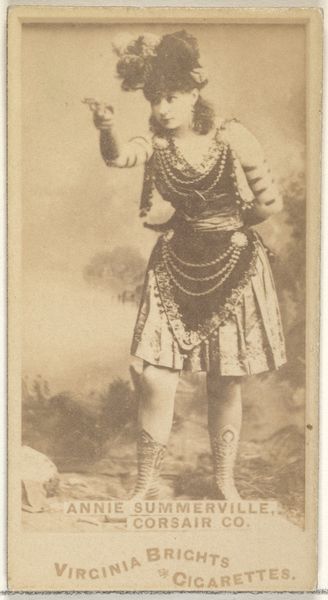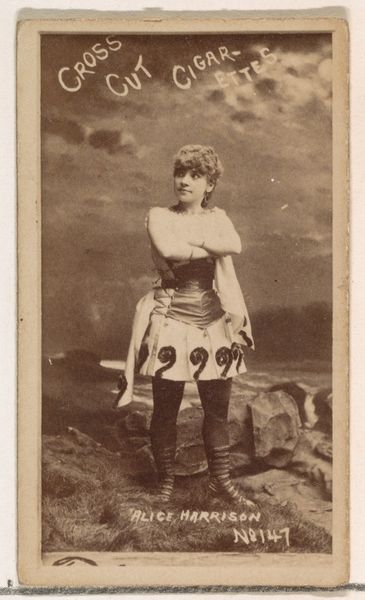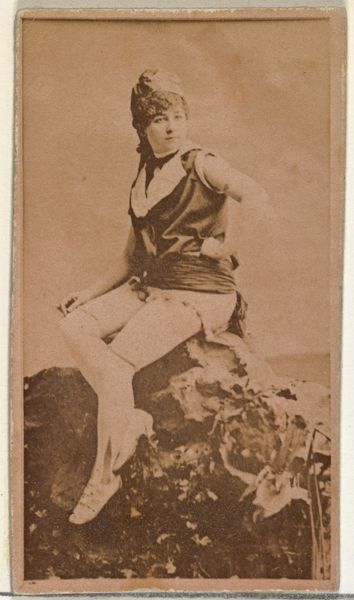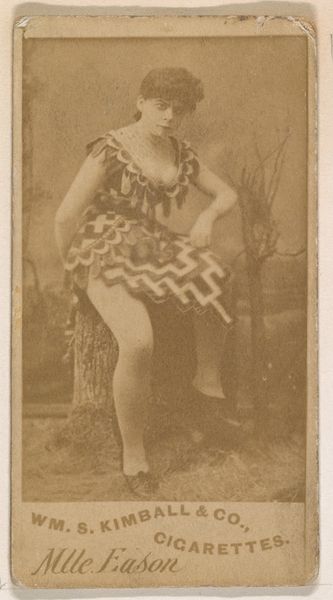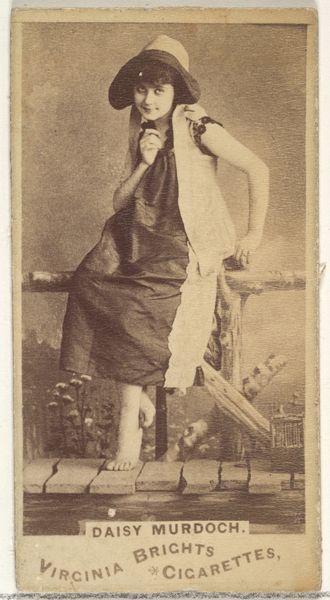
Card Number 132, Alice Harrison, from the Actors and Actresses series (N145-2) issued by Duke Sons & Co. to promote Cross Cut Cigarettes 1880s
0:00
0:00
print, photography
#
portrait
# print
#
figuration
#
photography
Dimensions: Sheet: 2 5/8 × 1 7/16 in. (6.6 × 3.7 cm)
Copyright: Public Domain
Curator: Here we have "Card Number 132, Alice Harrison," part of the "Actors and Actresses" series created by W. Duke, Sons & Co. in the 1880s to promote Cross Cut Cigarettes. It's a photographic print, currently residing at the Metropolitan Museum of Art. Editor: My first impression is the sense of theatricality. Even in this small format, Harrison exudes confidence; her costume suggests some kind of invented, quasi-classical world. There's artifice, yet something compelling. Curator: Absolutely. It speaks volumes about the societal role of women in the late 19th century and their depiction within early mass media. The cigarette cards offer an interesting lens through which to examine how these women were presented— often caught between respectable domesticity and the performative world of theatre and stage. Her posture hints at strength but also being put on display. Editor: Let's look closer at the material context, then. These weren't meant for gallery walls; they were marketing tools, printed en masse, literally given away to promote a consumer product. How does this impact our view of this "portrait"? The material makes a case that high and low brow categories collapse into one another when production changes its accessibility. Curator: That tension between high and low is exactly what interests me. These cards, initially aimed at promoting tobacco, have ironically become a vital cultural archive, showcasing not only theatrical trends but also prevailing beauty standards and gendered expectations. They act as mirrors, reflecting society’s fascination with actresses like Harrison. It's like, her gaze meets ours through layers of manufactured context and historical framing. Editor: And how was she photographed? Her attire. It is intended to sell. The materials and image operate in tandem with one another to serve capitalist interests, showing that an artist’s work is still reliant on materials and audience receptiveness. Curator: A vital consideration. This miniature format democratized portraiture, making images accessible to a wider public, outside traditional social confines. The cards transformed the idea of celebrity. Editor: Looking at this today, it shows so much of its time period. It is simultaneously valuable and limited. Curator: Exactly. I will hold that tension. It invites contemplation of beauty, power, labor, and identity, caught in this pocket-sized advertisement, reminding us that art can be both a product of, and a commentary on, the societies that produce it. Editor: Right, seeing Harrison, a celebrated actress, peddling something so damaging as a cultural commodity helps to provide an uncomfortable perspective.
Comments
No comments
Be the first to comment and join the conversation on the ultimate creative platform.

